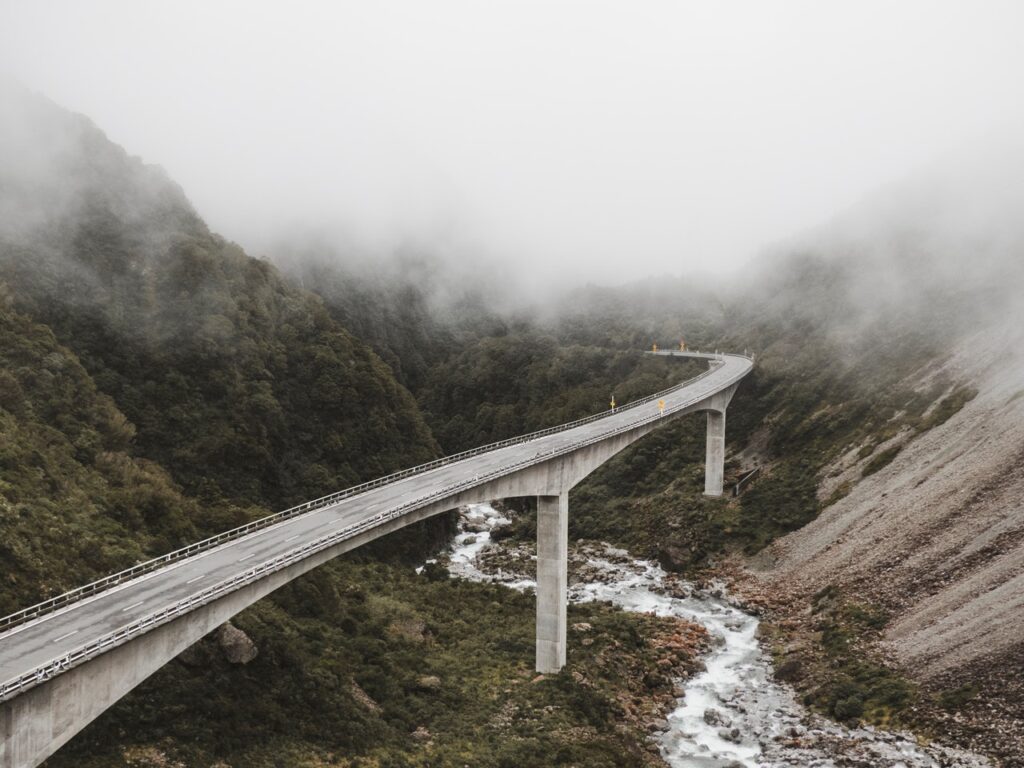Some questions that are often asked, “What is the role of a mechanical engineer in the civil field?”, “Can a mechanical engineer transfer to the civil field?”. In post we outline the roles of both mechanical and civil engineers, and explore the role of a mechanical engineer in the civil field. Is it possible? Read on to find out!
Mechanical Engineer
Mechanical engineering comprises a wide range of activities that include researching, designing, developing, manufacturing, managing and controlling engineering systems and their components. Mechanical engineering is the broadest of all the engineering disciplines and provides the widest range of career opportunities.
Mechanical engineers may deal with hardware as small as a microchip or as large as an aircraft carrier. They may work from the bottom of the ocean up to the weightless environment of interplanetary space. Some examples of products and processes developed by mechanical engineers include engines and control systems for automobiles and aircraft, lifesaving mechanical devices, electric power generation plants, robotics and a wide variety of consumer products. If you can see it or touch it, a mechanical engineer probably helped to create it.
A career in mechanical engineering requires at least a bachelor’s degree. These programs include instruction in various system components, from computer programming to power systems, and cover technical subjects such as fluid mechanics, thermodynamics, and hydraulics.
Civil Engineer
Civil engineering is a Science, Technology, Engineering, and Mathematics (STEM) field focused on designing and constructing the environments in which humans live. Civil engineers typically focus on large construction projects such as buildings, bridges, dams, roads, subway systems, and water supply networks.
Civil engineering is traditionally broken into a number of sub-disciplines. It is considered the second-oldest engineering discipline after military engineering, and it is defined to distinguish non-military engineering from military engineering. Civil engineering takes place in the public sector from municipal through to national governments, and in the private sector from individual homeowners through to international companies.

To become a civil engineer, you need to complete a four-year bachelor’s degree in a program accredited by the Accreditation Board for Engineering and Technology (ABET). An ABET-accredited degree is usually required for licensing as a civil engineer. To prepare for college work, high school students should take courses in chemistry, physics, and biology, along with classes in mathematics and computer science.
Mechanical & Civil Engineer Education
Mechanical Engineer
Mechanical engineers typically need a bachelor’s degree in mechanical engineering or mechanical engineering technology. Mechanical engineering programs usually include courses in mathematics and life and physical sciences, as well as design and engineering. Mechanical engineering technology programs focus less on theory and more on the practical application of engineering principles. They may emphasize internships and co-ops to prepare students for work in industry.
Some colleges and universities offer 5-year programs that allow students to obtain both a bachelor’s and a master’s degree. Some 5-year or even 6-year cooperative plans combine classroom study with practical work, enabling students to gain valuable experience and earn money to finance part of their education.
ABET accredits programs in engineering and engineering technology. Most employers prefer to hire students from an accredited program. A degree from an ABET-accredited program is usually necessary to become a licensed professional engineer.
Licensure is not required for entry-level positions as a mechanical engineer. A Professional Engineering (PE) license, which allows for higher levels of leadership and independence, can be acquired later in one’s career. Licensed engineers are called Professional Engineers (PEs). A PE can oversee the work of other engineers, sign off on projects, and provide services directly to the public.

Civil Engineer
A civil engineering degree program applies physical science and mathematics to solve specific, real-world problems in industry and commerce. A strong civil engineering program typically emphasizes the practical use of geometry, trigonometry, and calculus in conjunction with physics, material science, and chemistry. Online degree programs in civil engineering, primarily available at the master’s level, allow experienced students and professionals to learn advanced theory.
Civil engineering is inherently an interdisciplinary field. Often, students select courses in related application areas, such as computer science, applied mathematics, economics, urban and regional planning, chemistry and management. During their degree programs, civil engineering majors learn to take a holistic approach to solving problems. By blending creative use of math and science with a psychological understanding of citizens’ needs, future civil engineers can continue to make breakthroughs in design and efficiency.
To earn a bachelor’s degree in civil engineering, students complete courses in mathematical and computational methods, as well as courses geared more specifically toward the application of these methods to real-world problems. Typically, the student completes this curriculum within four to five years. Almost all entry-level engineering jobs require a bachelor’s degree.
Mechanical & Civil Engineer Job Description
Mechanical Engineer
A mechanical engineer will design, build, install and service mechanical machinery, tools and components across a range of industries. These include the manufacturing, construction, transport, power, sports and medical industries. Whichever industry they work in, they will normally be involved in three key areas:
Design – turning research ideas into technical plans using Computer Aided Design (CAD) and computer modelling programs.
Production – improving production processes, and planning and supervising the installation of machinery and parts in line with design plans and timescales.
Research and Development – assessing new products and innovations, and building prototypes
They could be working on large scale projects, such as new ways to harness wave and tidal power, or at small scale or ‘micromechanical’ level, for example making prosthetic implants to help people who have trouble moving about.
Some job responsibilities of a mechanical engineer include:
- Assist in the design and planning stages of manufacturing, whether it is following the specifications put forward by the client or a new internal project.
- Analyze energy and economic data as well as general calculations, and organize and present the information to managers in a meaningful way.
- Coordinate with the Project Manager, as well as the Construction Engineers and Customer Service departments; develop the sequence of operations to ensure maximum efficiency is achieved on a daily basis.
- Create 3D computer models of future projects for occasional larger scale assignments.
- Devise ways to improve efficiency by reviewing and analyzing the standard operating procedures; present information and recommendations for continuous improvements to managers in monthly board meetings.
- Implement electrical engineering principles to install and fix the electrical systems in mechanisms; implement refrigeration, psychometrics, controls systems, and acoustic fundamentals in applicable projects.
- Perform troubleshooting to identify and remedy issues that arise once a project is nearing completion.
- Review and oversee new equipment orders to ensure accuracy and timely acquisition of deliveries.

Civil Engineer
Civil engineers conceive, design, build, supervise, operate, construct and maintain infrastructure projects and systems in the public and private sector, including roads, buildings, airports, tunnels, dams, bridges, and systems for water supply and sewage treatment. Many civil engineers work in design, planning, research, construction, and education.
Civil engineers also must present their findings to the public on topics such as bid proposals, environmental impact statements, or property descriptions.
Many civil engineers hold supervisory or administrative positions ranging from supervisor of a construction site to city engineer, public works director, and city manager. As supervisors, they are tasked with ensuring that safe work practices are followed at construction sites.
Job responsibilities of a civil engineer include:
- Analyze long range plans, survey reports, maps, and other data to plan and design projects
- Analyze the results of tests on building materials, such as concrete, wood, asphalt, or steel, for use in particular projects
- Consider construction costs, government regulations, potential environmental hazards, and other factors during the planning and risk-analysis stages of a project
- Compile and submit permit applications to local, state, and federal agencies, verifying that projects comply with various regulations
- Oversee and analyze the results of soil testing to determine the adequacy and strength of foundations
- Prepare cost estimates for materials, equipment, or labor to determine a project’s economic feasibility
- Perform or oversee surveying operations to establish building locations, site layouts, reference points, grades, and elevations to guide construction
- Use design software to plan and design transportation systems, hydraulic systems, and structures in line with industry and government standards
Mechanical Engineer in the Civil Field
Civil engineers and mechanical engineers create design plans for the projects they’re working on. They also need to be able to determine the expected costs related to their project, and may oversee work on their projects. Civil engineers are responsible for building things like highways and tunnels, while mechanical engineers focus on mechanical products. Mechanical engineers may work with smaller items, such as medical devices, or they may work on mechanical systems in buildings, such as power generators.
A mechanical engineer in the civil field will generally fill a very similar role to a civil engineer. There will be different situations, where the mechanical engineer is coming straight out of college or has previous mechanical engineering experience, and this will determine what area the mechanical engineer will focus on.
There is a lot of overlap between mechanical and civil engineering, mostly on the materials side. The analysis of structures and machines are not that different (stress/strain, displacement/velocity/acceleration, etc). The main difference is the fluids and heat transfer analysis (density, compress-ability, viscosity, etc) that mechanical engineers do. Civil engineers do thermodynamics too, just to a limited extent.

However, there are concerns to be prepared for, licensure and further education. As a PE, ethically, you are only allowed to perform within your ability. It is your discretion to determine your competence; and if you don’t feel that competent, then a master’s degree may be the way to go. For most civil disciplines (transportation, geotechnical, construction, and environmental), it’s probably within a mechanical engineers grasp. Before acceptance into a Master’s in Structural Engineering, steel design, reinforced concrete design, and structural analysis will likely be required.
If you have anything to add, please feel free to leave a comment down below, and sign up to our newsletter for more of the same content!



